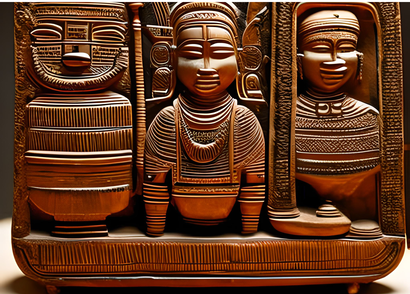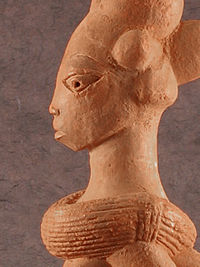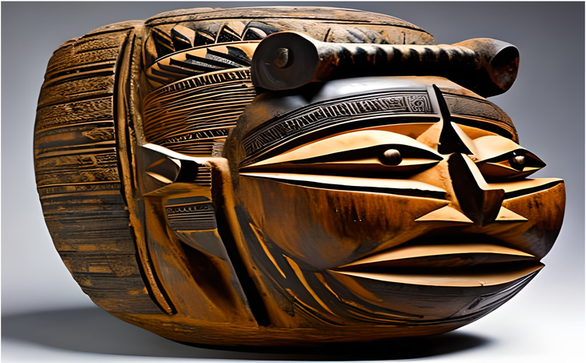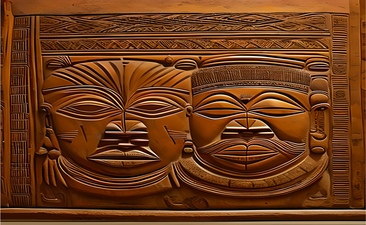
African art: Facts, History, and Nature of African art
Learn about African art – facts, history, and nature.
African Art
African arts were hidden from the world’s view for centuries in several museums across Europe, and much honor was not accorded to them until the 1989 Exhibition in Germany (Pompidou Exhibition). It was this art show that paved the way for the world’s demand for more pieces of African artifacts.
European travelers and missionaries were amazed when they discovered some fine African art paintings, sculptures, and masks in Africa. They never imagined such people deemed uncivilized and lacked any form of enlightenment would create such well-crafted arts.
Some, to prove that Africans are low-brain humans, tried to associate the art with the light-skinned people of North Africa. However, the artworks unearthed in Sub-Saharan Africa were purely made by inhabitants of the areas they were founded.
The Rock Art of the Sahara desert is over 6,000 years old. Before the incoming of the whites, bronze, terracotta, textile, and wooden artworks had been thriving in Africa, specifically in West Africa.
The terracotta Nok art is factually one of the oldest African arts, while dramatic Benin bronze arts are adored for their uniqueness. In the lower Niger are Igbo and Ile Ife. Igbo Ukwu and Ile Ife’s artworks date to the 9th AD. Many of the African artworks were found in fragments as not much effort was put in place to preserve them.

Africa as a continent is inhabited by people of different tribes in different environments. The environment influenced the type of art they made. Most African sculptures and paintings reflect nature. Although the coming of the European influenced the African artifacts in a limited way, some scholars with racism under hue claim that Benin’s knowledge of bronze casting and ironwork was a result of their contact with the Portuguese traders. In contrast to that claim, metal work had been going on before that period in West Africa, specifically in Igbo Ukwu where Benin’s knowledge of metallurgy is believed to have originated.
Since the late 19th century, African arts have gained more attention, unlike ever since many of them were looted from the continent and ended in many museums in Europe. Scholars around the world, governments, and institutions have dedicated more attention to African art pieces. Currently, the majority of the famous African artifacts are in European museums.

Nature of the African artifacts
African artworks have played a huge role in the reconstruction of the history of Africa and reclaiming its artistic position on the world stage as the cradle of humanity.
African ancient arts are in different forms. They’re either sculpted in wood, metal, or stone. The environment is the major determinant in the choice of material for the artwork. Those inhabiting the rainforest area worked with wood, whereas those surrounded by iron created their arts with iron. African arts serve a different purpose and have different values.
The African arts are veneered with religious, political, entertainment, and aesthetical undertones. For example, Benin Bronze arts were created for different purposes: some for mere decoration of the Oba’s palace, whereas many are for entertainment and ritual purposes.
African sculptures
Nok is one of the most popular African sculptures discovered. Nok Civilization spanned between 1500 BC-500AD. Ironwork thrived in the Jos Plateau area around this time till when it halted in 500 AD. Nok art is highly valued in the international market despite being discovered in fragments. Nok has a human-like head and styled hair.
Read Also:
Metal artworks
According to archeological excavations, smelting of iron and iron-forging tools had been around in Africa since 1000 BC. Metal artifacts survived the havoc termites wracked on them and other destructive agents for centuries. Most of the African metal artifacts were still intact at the time of their discovery or excavation.
Here’s a list of the most famous African metal art piece
1. Igbo Ukwu
Igbo Ukwu art is dated back to 9th AD and is considered the oldest bronze work in Africa. Iron casting had been going on in the Igbo Ukwu area since 9 AD, from where it spread to other parts like Benin and Ile Ife. The Benin and Ile Ife arts were influenced by Igbo Ukwu arts.
2. Benin Bronze Arts
The Benin Kingdom in Southern Nigeria is regarded as the cradle of African civilizations due to its organized society and arts that elevate the status of Africa on the international stage. Artworks were done in the Benin Kingdom for ritual reasons. However, many pieces of the artwork elicited humor and were used to adorn the Oba’s Palace. Every new Benin’s Oba commissioned an ancestral altar and chose arts to decorate it. The Oba did the same to the queen-mother, too.
Before the British Expedition of 1987 that saw the Oba dethroned and sent into exile, the Benin Kingdom flourished in arts. The Benin Kingdom was bombarded by the British soldiers and looted its arts and riches. There are moves presently to return the looted Benin Bronze arts.

3. Ile Ife Arts
Ile Ife is famous for its metallic carved heads. The holy town of Yoruba was the center of civilization since 500 BC. It had traded with neighboring kingdoms. Ile Ife’s arts were made of bronze, terracotta, and brass. They’re said to represent the past rulers of the Ife people, the former political center of the Yoruba people. The craft of the heads of the art pieces is similar, which leads scholars to believe they were created by the same individuals or in the same workshop.
Wooden African arts
Wooden arts are vulnerable to termites’ destruction; that is the reason stated as to why the people inhabiting the rainforest areas have no surviving artwork. The wooden art in Africa is believed to have started in Kuba, Zaire. However, none of the works from there survived.
Here are some of Africa’s famous wooden arts
1. Bangwa Queen
The Bangwa Queen is carved out of wood. The Bangwa people of Cameroon made sculptures for titled queens or princesses. The Bangwa Queen represents the power and well-being of the Bangwa people.
2. Kuba arts
According to Britannica, the art of Kuba is one of the most developed of all African traditions. This art dates back to the time of Mucu Mushanga, their 27th king and the first to make clothing out of bark cloth. Shamba Bolongongo (c. 1600), the 93rd king, introduced weaving and textile manufacture to the people and became the first Kuba ruler to have his portrait carved in wood. The Kuba people used geometric forms in their sculptures and also have unique styles for their textiles and utensils. The Kuba Kingdom is known as the Kingdom of the Savannah. It is bounded to the southwest by the Kasai and Lulua rivers and to the north by the Sankuru River, a tributary of the Kasai. The Kuba Kingdom is currently called the Democratic Republic of Congo.
